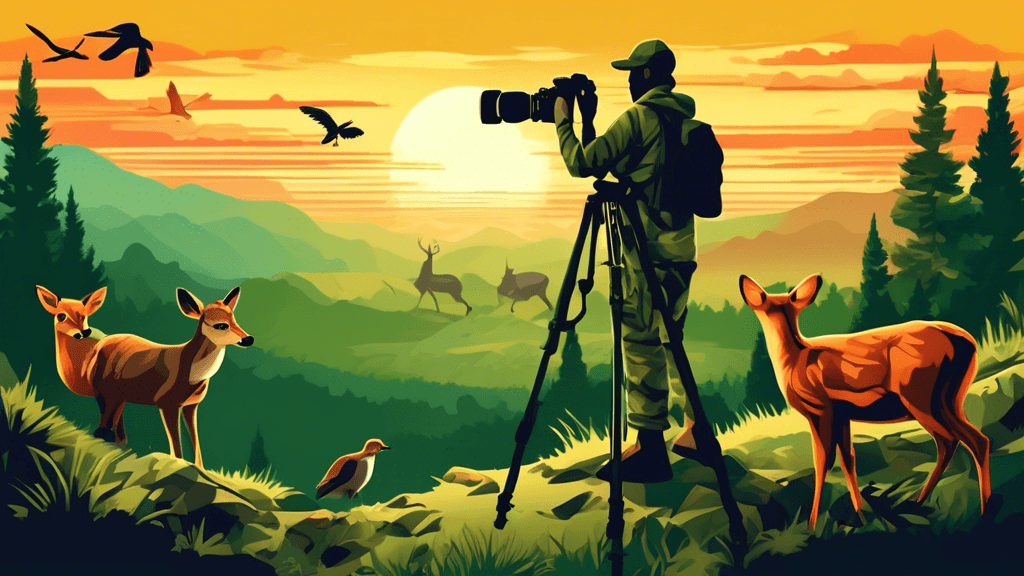
Capturing Nature: Techniques for Wildlife Landscape Photography
Share
Exploring the Art of Wildlife Landscape Photography
Wildlife landscape photography beautifully merges the realms of flora, fauna, and the environment, presenting a unique challenge to photographers of all levels. This art form not only requires an understanding of photographic techniques but also demands a deep respect for nature and its inhabitants. This blog aims to equip you with key strategies and insights to enhance your wildlife landscape photography, whether you're a hobbyist or a seasoned professional.
Understanding Wildlife Landscape Photography
Wildlife landscape photography is the practice of capturing images that feature animals within their natural habitat. This genre of photography aims to portray the intrinsic relationship between wildlife and their environment, giving emphasis to the landscape's role in the life and behaviors of the fauna depicted. Here, the photographer's mission is two-fold: to document natural behaviors unobtrusively and to convey the beauty and grandeur of the natural world.
Essential Techniques in Wildlife Landscape Photography
To successfully capture the essence of the natural world, photographers must hone specific techniques. These include:
- Patient Observation: Wildlife photography requires patience. Spending time to observe the behaviors and patterns of wildlife leads to more intuitive and impactful shots.
- Golden Hours: Utilizing the soft, diffused light of dawn and dusk, known as the golden hours, can dramatically enhance the mood and aesthetic of your photos.
- Appropriate Gear: A versatile lens is crucial. Wide-angle lenses are ideal for expansive landscapes, while telephoto lenses are better suited for capturing distant wildlife without disturbance.
- Composition Techniques: Incorporating elements such as leading lines, the rule of thirds, and framing can all help draw the viewer’s eye into the image and create more dynamic photographs.
The Ethical Dimension
In wildlife landscape photography, ethical considerations are paramount. As photographers, we must prioritize the welfare of our subjects over the photos we aspire to take. This involves:
- Minimizing Impact: Always strive to leave no trace and minimize your impact on the natural surroundings.
- Respecting Wildlife: Maintain a safe distance. Use your zoom and avoid actions that could stress or threaten wildlife.
We are visitors in the natural homes of wildlife. It's our duty to act as responsible stewards, notes John Smith, a wildlife conservationist with over 20 years of field experience. His sentiment underscores the dual role of photographers as both observers and protectors.
Post-Processing Tips
Post-processing is a tool that should be used sparingly in wildlife landscape photography, aiming to enhance rather than alter the captured image. Here are a few tips to stay true to the natural beauty while post-processing:
- Subtle Adjustments: Aim for subtle corrections to exposure, contrast, and color balance to reflect what your eye naturally saw.
- Highlight the Subject: Use tools like dodging and burning to subtly draw attention to the main subjects without making the edits obvious.
- Preserve the Environment: Avoid heavy cropping or removal of natural elements which play a role in the story of the habitat.
Connecting Through Your Work
Wildlife landscape photography has the power to connect people with the natural world. Each image can tell a story, provoke thought, and inspire conservation efforts. By understanding the behavior of wildlife and mastering landscape compositions, photographers can create compelling imagery that not only captures the beauty of nature but also highlights the interdependence of ecosystems.
Remember that each photo contributes to a larger narrative about our planet and its delicate ecosystems. The images we take are not just snapshots; they are a glimpse into a world that many people might never get the opportunity to see firsthand. It’s a powerful tool for awareness and change, affirms wildlife photographer Emily White.
In Conclusion
Mastering wildlife landscape photography requires technical skills, creative vision, and an ethical approach. As you continue to explore this fascinating field, focus on uniting your passion for photography with a commitment to environmental conservation. The result will be more than just photographs; it will be a meaningful contribution to understanding and preserving our world.
Whether you're waiting out in the field for the perfect shot or reviewing your captures at home, keep striving to tell the profound story of nature through your lens. If you are passionate about wildlife and nature, take the next step by sharing your photography. It's not only about capturing moments but also about making moments that matter. Forge connections, share insights, and inspire change.





